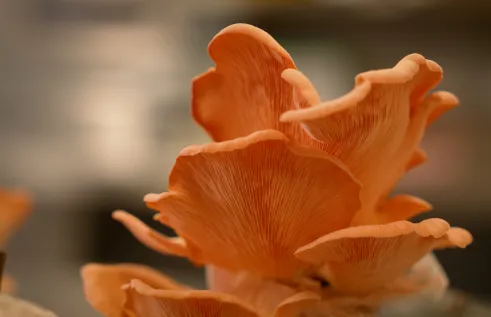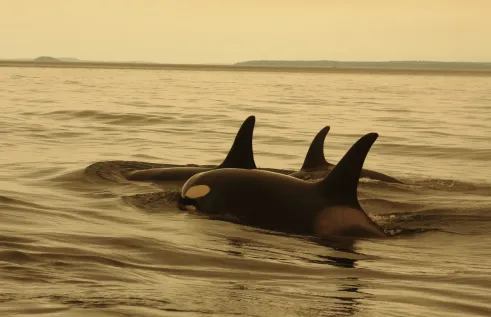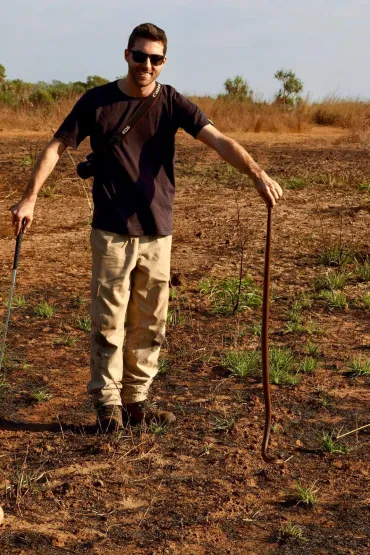news article
Data shows Darwin a tropical paradise for snakes
Data analysed by a Charles Darwin University researcher has confirmed Darwin is a tropical paradise for snakes, harbouring more different species than any other capital city in the country.
The analysis, based on calls from members of the public to professional snake catchers between 2011 and 2017, found 5210 human interactions with the reptiles over a seven-year period.
CDU Research Institute - Environment and Livelihoods researcher Dr Brenton von Takach said despite the volume of callouts, almost 90 per cent of interactions were with non-venomous snakes.
“It’s the classic pattern of biodiversity, there’s an increase in diversity towards the tropics; you tend to find a lot more species up here than down south,” Dr von Takach said.
“Darwin being a very northerly city has a lot more snakes than most other cities across the country.
“But in saying that we obviously have less dangerous snakes than many other places.”
There are 34 non-marine snake species found in the broader Darwin region, compared with Brisbane (30), Perth (18), Sydney (16), Adelaide (eight), Melbourne (seven), Canberra (five) and Hobart (three).
The analysis found two species (golden tree snakes and carpet pythons) had more than 1000 callout records each, and three species (children’s pythons, water pythons and slaty-grey snakes) had between 500 and 1000 records each.
Together the five species, all considered non-dangerous to humans, were responsible for 4262 (81 per cent) of the total number of records.
Dr von Takach said despite the numbers, there was still a significant fear factor surrounding the reptiles in the Top End.
“A lot of people are surprised or worried when they see snakes in their yard or their house, but when explained to them that it’s a golden tree snake and it’s not going to hurt them, most are happy to leave the snake in their yard or property,” he said.
“It’s more a matter of explaining to people which snakes are dangerous and which won’t hurt them - the reality is the majority aren’t going to hurt you.
“Having said that, there’s a lot of people that are still worried about pythons eating their chickens or their dogs.”
Dr von Takach conducted the research alongside snake catcher and lead author Tom Parkin (Australian Museum Research Institute) and co-authors Chris Jolly (Charles Sturt University) and Alana de Laive (Australian Museum Research Institute).
He said snake numbers around Darwin had remained surprisingly similar across the seven-year period.
“There was no long-term change with the numbers year-on-year, they seem relatively consistent,” Dr Von Takach said.
“Across the years there hasn’t been a significant difference.”
A full analysis of the research can be found here: https://onlinelibrary.wiley.com/doi/full/10.1111/aec.12990?campaign=wolearlyview
Related Articles

Cotton trash to treasure: Project using waste to grow new mushroom industry
Supermarket shelves could be stocked with mushrooms grown from the Northern Territory’s cotton waste, with a Charles Darwin University research project exploring the possibility of broadening the region’s agricultural industry.
Read more about Cotton trash to treasure: Project using waste to grow new mushroom industry
Stereotypes holding back Australia’s recreational fishing future, new study finds
Outdated stereotypes about who a “real fisher” is could be costing Australia’s recreational fishing industry valuable talent, creativity, and growth, new research from Charles Darwin University suggests.
Read more about Stereotypes holding back Australia’s recreational fishing future, new study finds
Global body adopts policy to protect Earth’s old, wise and large animals
The International Union for Conservation of Nature (IUCN) has recognised Charles Darwin University-led research into the Earth’s oldest animals with the adoption of the ‘Longevity Conservation’ global policy principle.
Read more about Global body adopts policy to protect Earth’s old, wise and large animals
